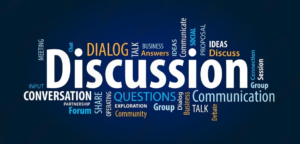Have you ever faced challenges in keeping a conversation going or longed for deeper connections? This is where conversation hacks come into play. These purposeful strategies aim to improve your communication abilities, helping you engage, connect, and create lasting impressions. Mastering these techniques can lead to significant transformation in personal relationships or professional environments.
Conversation transcends simple word exchange; it’s about forging connections. Skilled communicators adeptly navigate intricate social situations, influence others, and build trust with ease. By grasping the subtleties of conversation, from non-verbal cues to psychological tactics, you can gain an advantage in your interactions. This article delves into varied conversation techniques that harness psychological insights, active listening, and body language to boost your conversational skills.
The Psychology of Effective Conversations
To truly excel in conversation, one must grasp the psychological principles that drive human communication. It’s intriguing how much our interactions hinge on both verbal and non-verbal signals. Humans are intricate, and the way we perceive and process conversations can greatly affect their outcomes.
Go Deeper: 10 Powerful Ways to Improve Communication Skills and Boost Your Success
Understanding Human Dynamics in Conversations
Our emotions, thoughts, and biases significantly shape our dialogues. When engaging with someone, our brains swiftly analyze their tone, body language, and even micro-expressions. This subconscious evaluation influences our reactions. For instance, if an individual appears open and relaxed, we are likely to feel at ease and respond similarly. Conversely, signs of tension or apathy may trigger defensiveness or withdrawal.
Mirroring and Matching: Effective Psychological Hacks
A powerful method for establishing rapport is through mirroring and matching, where you subtly reflect the other person’s body language, tone, and speech patterns. This technique is based on the understanding that individuals feel more comfortable with those who exhibit similar traits. By mimicking their behaviour, you foster familiarity and trust, encouraging the other person to engage more willingly. This doesn’t involve exact imitation but rather aligning your overall demeanour in a natural, seamless manner.
Essential Conversation Hacks for Various Situations
Having a collection of go-to conversation techniques proves invaluable, whether at a networking event, on a date, or chatting with a friend. The essence lies in being genuine and adaptable. These methods are crafted to enhance more fluid, enriching interactions, elevating your communication effectiveness.
Ask Open-Ended Questions
Open-ended questions act as powerful catalysts for deeper discussions. Unlike yes-or-no inquiries, they invite the other person to elaborate on their thoughts and experiences. Instead of asking, “Did you enjoy the book?” try saying, “What did you think of the book?” This prompts a more detailed response and keeps the conversation moving smoothly.
Active Listening: The Quiet Conversation Hack
Although listening may appear passive, it’s one of the most powerful yet easy conversation techniques. Active listening entails fully concentrating on the speaker, acknowledging their points with nods or brief affirmations, and avoiding interruptions. This approach makes the speaker feel valued, significantly enhancing the interaction’s quality. Reflective listening—where you paraphrase what the other person said—demonstrates your engagement.
Using Pauses and Silence to Manage Flow
While silence might be uncomfortable, well-timed pauses can underscore your points and give both you and your conversation partner a chance to think. Pausing helps you avoid filler words like “um” or “like,” portraying you as more confident and thoughtful. Effectively employing silence can signal that you’re carefully considering your responses, which can be particularly relevant in professional discussions.
Non-Verbal Communication Strategies
While the content of your speech is significant, how you convey it matters even more. Non-verbal signals, including body language, expressions, and gestures, play a critical role in communication. Mastering these can greatly enhance your conversational skills.
The Importance of Eye Contact in Dialogue
Maintaining eye contact stands out as one of the best ways to build trust and show engagement. It communicates focus and interest in the other person’s words. However, balance is crucial—too much eye contact may come off as intimidating whereas too little can signal disinterest. Aim for maintaining eye contact for about 60-70% of the dialogue.
The Impact of Body Language on Communication
Your body language conveys volumes about your confidence and approachability. An open posture—uncrossed arms, relaxed shoulders, and slightly leaning in towards the speaker—can enhance your approachability. Avoid defensive stances like crossed arms or hunched shoulders, which can build barriers between you and the other person.
Advanced Hacks to Influence Others
Beyond the fundamentals, several advanced strategies can help you sway opinions and forge strong connections during conversations. These techniques are especially beneficial in contexts where you aim to cultivate meaningful relationships or influence viewpoints.
Leveraging “The Ben Franklin Effect” in Discussions
The Ben Franklin Effect refers to the psychological tendency of people to like you more after they’ve done you a favour. Use this concept in conversations by requesting small favours or opinions. For example, you might say, “Could you recommend a resource on this topic?” This technique taps into our tendency to justify actions by aligning them with our attitudes, leading the individual to believe they like you for helping you.
Creating Bonds Through Shared Experiences
People are instinctively drawn to those with whom they share similarities. Discussing common experiences or interests fosters camaraderie and understanding. For instance, if you discover that you and your conversation partner have visited the same location, delve into that shared experience. This deepens the conversation and enhances your connection.
Common Pitfalls to Avoid in Conversation
Even adept communicators may falter at times. Being aware of frequent pitfalls can help you sidestep mistakes that undermine a conversation or hinder rapport.
Cutting Others Off: A Conversation Breaker
Interrupting someone mid-sentence disrupts their thoughts and can come across as inconsiderate. It suggests that you prioritize your input over theirs. To avoid this, exercise patience and allow the other person to finish speaking. If necessary, a respectful “Sorry to interrupt, but I wanted to add…” can soften the interruption.
Self-Centered Conversations: Finding Balance
While sharing personal anecdotes can enliven dialogue, dominating the conversation with your experiences can be off-putting. Strive to balance personal contributions with genuine curiosity about the other person’s stories and opinions. This approach ensures a more engaging conversation where both parties feel equally valued.

FAQs on Conversation Hacks
How can I initiate a dialogue with a stranger?
Start with a friendly comment or question related to your surroundings, like, “This event is fantastic; have you attended before?” It establishes common ground and paves the way for deeper exchanges.
What’s the best way to keep a conversation engaging?
Utilize open-ended questions combined with active listening for an organic dialogue, demonstrating genuine interest in the other person.
How do you navigate awkward silences?
Acknowledge the silence with a light-hearted remark, like, “I’m just collecting my thoughts,” then pivot back to a topic or question seamlessly.
What are effective conversation starters for networking?
Inquire about the individual’s background or interests, such as, “What brought you to this event?” or “What projects excite you currently?”
How can conversation hacks enhance my professional interactions?
Leverage active listening, project confident body language, and apply the Ben Franklin Effect to foster rapport and influence in the workplace.
What are essential body language tips for improved communication?
Maintain an open stance, ensure appropriate eye contact, and utilize gestures for emphasis. Avoid crossing your arms or turning away from the speaker.
Conclusion
Mastering conversation hacks can greatly enhance your communication abilities, allowing for deeper connections and smoother navigation of social situations. By understanding the psychological elements behind conversations, applying effective verbal and non-verbal strategies, and steering clear of common errors, you can evolve into a more captivating and persuasive communicator. Regular practice of these techniques will soon see you engaging with confidence in any situation.

